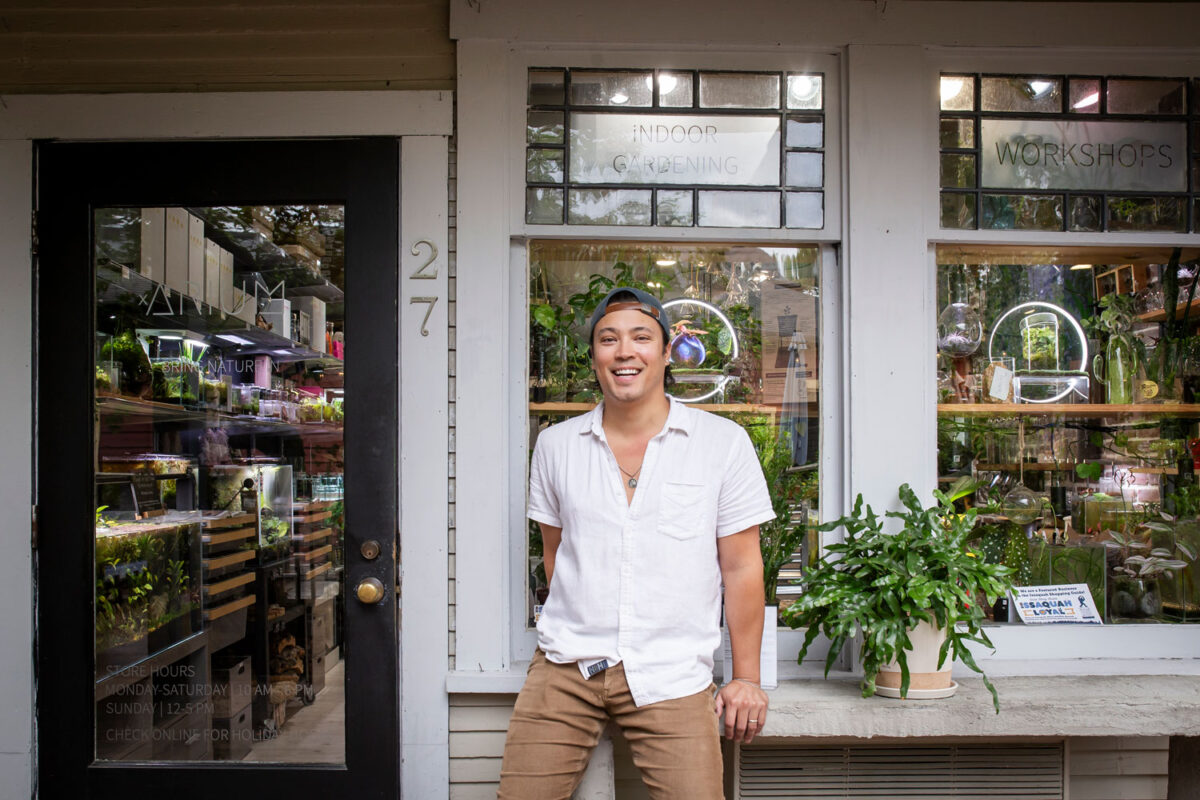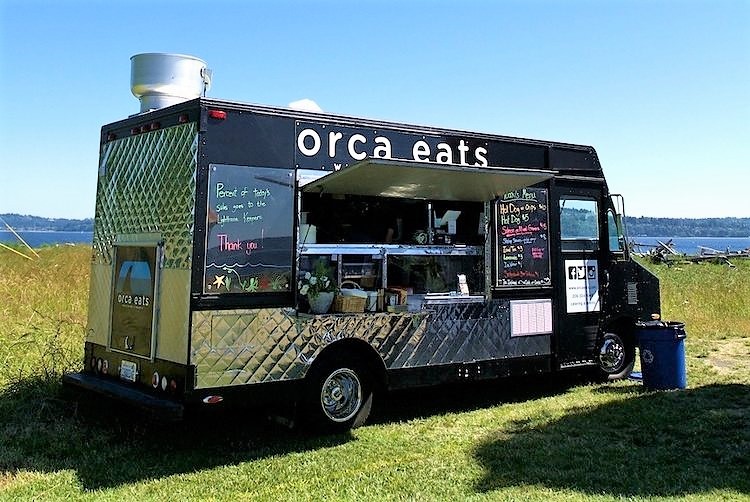
Nearly everyone who has undertaken a heavy-duty cleaning job with a concentrated chemical has likely gasped for air. Your nose, throat and eyes irritated, you realize why product labels recommend ample ventilation and wonder if you might be doing something wrong.

A common and potentially fatal mistake is mixing ammonia and bleach, which produces a deadly gas. “It happens more frequently than you think, especially in our homes,” said Grace Lasker, teaching professor in the University of Washington Bothell’s School of Nursing & Health Studies.
Harsh cleaners also impact the environment when they go down the drain, she said. But while cleanliness is critical, many people don’t realize there are alternative chemicals that are healthier for workers and the planet.
EarthLab
To bring attention to effective alternatives, experts from the University of Washington, a state agency and a nonprofit formed a team to identify and promote safer cleaning methods, starting with food trucks.
Why food trucks? Imagine how difficult it must be for the operators, working in confined spaces and now cleaning more often because of the coronavirus pandemic. Food trucks also are a small business for some immigrant entrepreneurs who could use help meeting health and safety regulations.
The team received an EarthLab grant to create a toolkit of resources called Clean SHiFT (Safety & Health in Food Trucks). EarthLab is a UW initiative that connects the College of the Environment and other UW units in partnerships that take on environmental challenges. The Clean SHiFT project received $49,000 in a 2019-20 grant, which was extended into this year because of the pandemic. The toolkit officially launched this month, said Lasker, one of the project leaders.
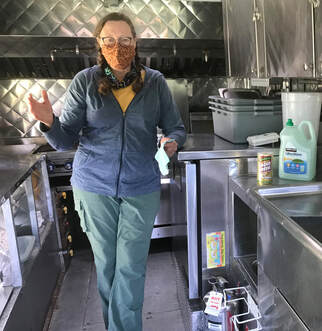
Others who drove the shift to green cleaning are Nancy Simcox, assistant teaching professor in the UW Department of Environmental & Occupational Health Sciences; Saskia van Bergen, a chemist with the state Department of Ecology; and Aurora Martin, founder of PopUPJustice, a Seattle community-building nonprofit, and a faculty member at Heritage University on the Yakama Indian Reservation in eastern Washington.
Survey says
The team worked with the Washington State Food Truck Association and health departments in King and Yakima counties to reach food-truck operators. Students from the UW in Seattle and Bothell as well as Heritage University conducted a survey of English and Spanish-speaking operators.
The survey found that most food truck operators clean with bleach. Most weren’t aware of alternative products that also meet regulations. Several people with asthma and other respiratory problems expressed interest in less toxic cleaning methods.
“When they are in poorly ventilated food trucks for long periods of time and doing this cleaning, it’s definitely a worker safety issue,” said Lasker. “You have to make change now for the future.”
Toolkit tips
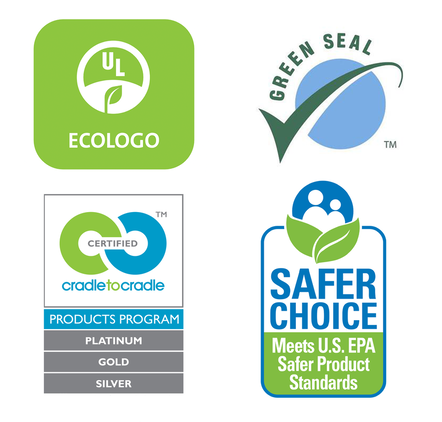
The Clean SHiFT toolkit integrates food safety and occupational health regulations from the state Departments of Health and Labor & Industries. The resources are available on the website. In addition, Clean SHiFT includes a fact sheet, available in English and Spanish, with a six-step protocol to transition to safer chemicals. Clean SHiFT also recommends third-party certifications of health, environmental and performance criteria. Look for Safer Choice, Green Seal, Ecologo, and Design for the Environment on product labels.
Safer chemical ingredients exist, Lasker said, and companies are using them to create new cleaning products. For example, activated hydrogen peroxide (different from the hydrogen peroxide sold in brown bottles in drug stores) is added with surfactants and other ingredients to make a safer disinfectant that schools and hospitals are starting to use. It is effective, especially when used with a microfiber cloth, said Lasker.
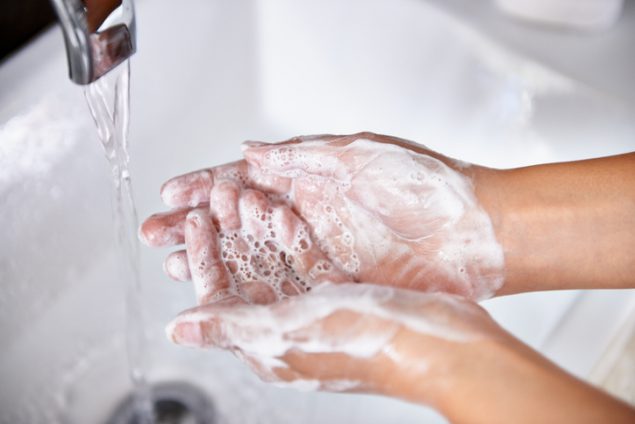
Some other disinfectants approved by the Environmental Protection Agency include ingredients such as isopropyl alcohol and citric acid. And, one of the best methods for cleaning is simple soap and water. That is why frequent handwashing is recommended to help prevent the transmission of COVID-19. Soap inactivates the virus by dissolving the fatty membrane that envelops it.
Good food, thoughtfully
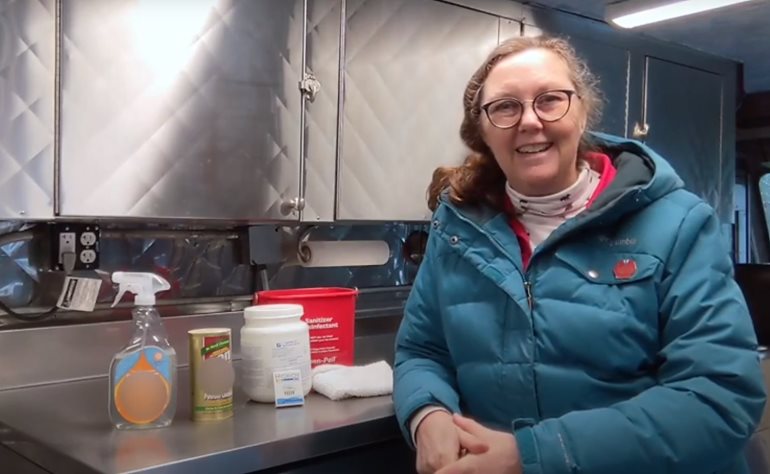
Cleaning is important for customers but only one consideration, said Emily Wigley, owner-operator of Orca Eats food truck on Vashon Island.
“We need to think about the people on the inside of the truck. We also need to consider the earth when we are choosing our products.” said Wigley, a member of the advisory board for the Washington Food Truck Association who supported the Clean SHiFT project.
Orca Eats uses no plastic packaging or utensils, and Wigley grows some of the food she serves in her “food to fender” operation. “Let’s do our best to take care of the people and the earth and make some good food.”



